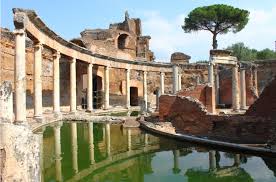Ancient Malaria with David Pickel
Episode 35 - November 8, 2020

David Pickel, PhD Candidate at Stanford University and Director of Excavations, La Villa Romana di Poggio Gramignano Archaeological Project, Lugnano in Teverina, Italy sits down with Merle and Lee to talk about his research on malaria in the ancient world from both a local and a global perspective. He discusses his ongoing archaeological excavation of a child cemetery, which may have been used specifically for victims of malaria. The conversation then turns to how and why historians suggest malaria had a starring role in stopping Attila the Hun and malaria’s use in the fall of Rome narrative. Finally, he reflects upon the new collaborative work on malaria published across various disciplines recently.
Further Reading
- Sallares, R. 2002. Malaria and Rome. Oxford: Oxford University Press.
- Soren, D. 2003. “Can archaeologists excavate evidence of malaria?” World Archaeology, Vol. 35, No. 2: 193-209.
- Marciniak, S., D.A. Herring, A. Sperduti, H.N. Poinar, and T. Prowse. 2018. “A multi-faceted anthropological and genomic approach to framing Plasmodium falciparum malaria in Imperial period central-southern Italy (1st–4th c. CE).” Journal of Anthropological Archaeology, Vol. 49: 210-224.
- Montagnetti, R., D. Pickel, J. Wilson, F. Rizzo, and D. Soren. 2020. “Recent excavations of the Roman villa and Late Roman child cemetery at Poggio Gramignano (Lugnano in Teverina, Umbria).” European Journal of Post-Classical Archaeologies, Vol. 10: 197-218.
Our Guest
David Pickel,
PhD Candidate at Stanford University and Director of Excavations, La Villa Romana di Poggio Gramignano Archaeological Project, Lugnano in Teverina, Italy
.
